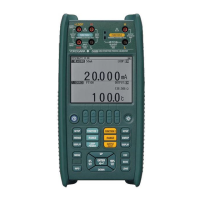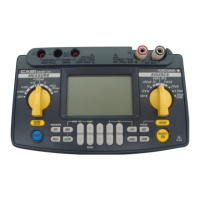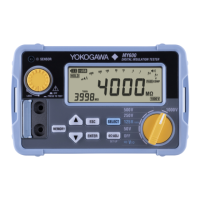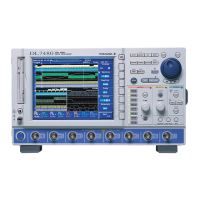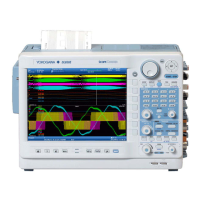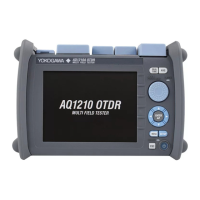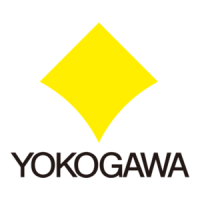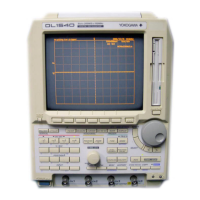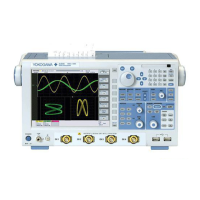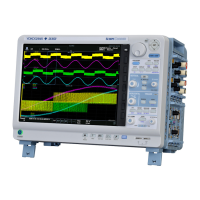Do you have a question about the YOKOGAWA CA500 and is the answer not in the manual?
| Input Channels | 1 |
|---|---|
| Current Range | 0 to 24 mA |
| Display Digits | 5 digits |
| Display | LCD |
| Communication Interface | USB |
| Power Supply | AA battery x 4 |
| Functions | Voltage, Current, Resistance, Temperature, Frequency |
| Thermocouple Types | K, J, T, E, R, S, B, N |
| RTD Types | Pt100, Pt200, Pt500, Pt1000, JPt100 |
| Power Source | Battery or AC adapter |
| Measurement Range (AC/DC) | AC/DC Voltage, AC/DC Current |
| Input Impedance | 10 MΩ |
| Operating Temperature | 0°C to 50°C |
| Power Supply (Battery) | AA battery x 4 |
Explains symbols, characters, and formatting used in the manual for clarity.
Guides users on understanding the manual's structure and descriptions.
Details the overall system setup and provides a block diagram for the instrument.
Explains the instrument's ability to generate various electrical signals like voltage, current, and resistance.
Describes the linear, step, and program sweep capabilities for varying output signals over time.
Details the instrument's capacity to measure electrical parameters like voltage, current, resistance, and frequency.
Outlines functions for calibrating field instruments, including program sweep and pass/fail judgment.
Explains the procedures for saving and retrieving data specific to the CA500 model.
Details data saving methods and formats for the CA550 model.
Covers additional functions like auto power-off, screen light control, and communication settings.
Details how to generate DC voltage outputs, including ranges and specific values.
Explains the generation of DC current outputs, including ranges and simulation modes.
Describes how to source resistance values, including available ranges and wiring systems.
Explains sourcing voltage based on thermocouple types and temperature scales.
Details sourcing resistance values based on RTD types and temperature measurements.
Covers generating frequency and pulse signals, including amplitude, count, and contact output.
Explains how to define reference 0% and 100% values for source scaling and sweeps.
Describes how to divide source ranges into steps for gradual output changes.
Details the setup and execution of linear, step, and program sweeps for signal generation.
Explains how to measure DC voltage, including ranges and 0%/100% value mapping.
Details measuring DC current, including ranges and loop power functionality.
Covers measuring resistance, including ranges, wiring systems, and connection methods.
Explains measuring temperature with thermocouples, including TC types, terminals, and scales.
Details measuring temperature using RTDs, including RTD types and wiring systems.
Explains measuring frequency and pulse counts, including contact input and count time settings.
Describes how to set reference values for measurement scaling and percentage display.
Explains setting tolerance values for pass/fail judgments in calibration.
Covers displaying moving average, maximum, and minimum measured values.
Outlines the workflow for calibrating field instruments using program sweeps.
Details setting source/measurement ranges, program sweeps, and calibration tolerances.
Explains how to save calibration data in CSV format and transfer it to a PC.
Describes how to manually save measured and sourced data to the instrument's memory.
Explains automatic data saving for step and program sweeps.
Details how to load saved data for viewing and delete unwanted entries.
Provides instructions for transferring saved data from the CA550 to a PC via USB.
Illustrates the CSV data format for saving using SAVE key, step sweep, and program sweep.
Covers automatic power-off, screen light timer, and manual screen brightness control.
Explains how to enable/disable the internal 250 Ω communication resistor for signal amplitude.
Details selecting priority between battery and USB power sources for instrument operation.
Allows configuration of decimal point and data separator symbols for saved files.
Enables selection of the date and time display format (YYYY/MM/DD, DD/MM/YYYY, etc.).
Allows users to choose the display language for the instrument interface.
Explains how to perform a quick format of the internal memory, erasing all data.
Outlines USB capabilities, including remote control and mass storage (CA550).
Provides details on connecting the instrument via USB and necessary CDC driver information.
Provides a comprehensive list of SCPI commands for remote control and data retrieval.
Details command syntax, setting/control operations, and specific command descriptions.
Lists and explains various error codes that may be displayed by the instrument.
Explains the format and meaning of the device status byte for monitoring instrument conditions.
